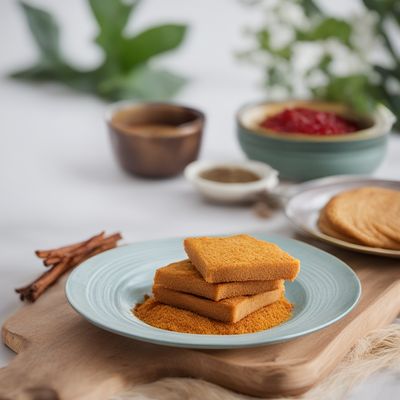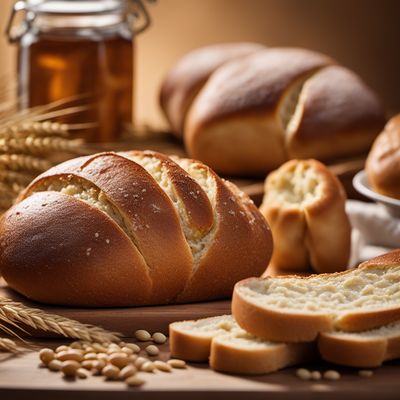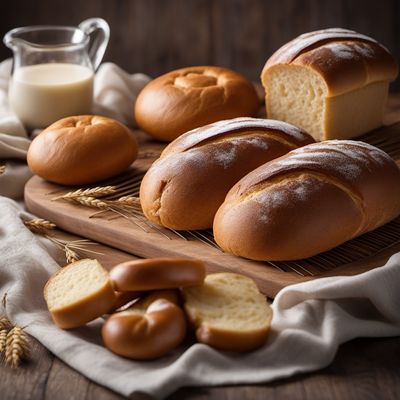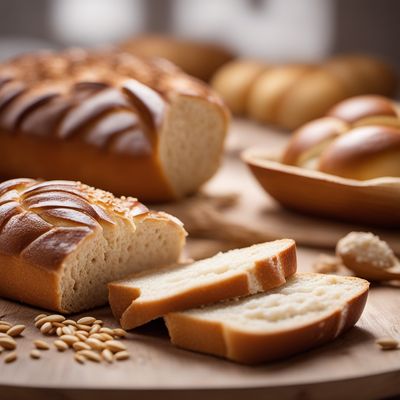
Ingredient
Wheat bread and rolls, white with rice
The Versatile Blend of Grains and Fluffiness
Wheat bread and rolls, white with rice are made from a blend of wheat flour and rice flour, resulting in a soft and fluffy texture with a slightly sweet taste. The bread has a light golden crust and a tender crumb, making it perfect for sandwiches, toast, or as a side to soups and stews. The addition of rice flour adds a subtle nuttiness and enhances the overall texture of the bread.
Origins and history
The origins of wheat bread can be traced back to ancient civilizations, where wheat was one of the first cultivated grains. Rice, on the other hand, has a long history in Asian cultures, particularly in regions like China and India. The combination of wheat and rice flour in bread is a fusion of culinary traditions, resulting in a unique blend of flavors and textures.
Nutritional information
Wheat bread and rolls, white with rice are a good source of carbohydrates, providing energy for the body. They also contain some dietary fiber, vitamins, and minerals. However, the exact nutritional content may vary depending on the specific recipe and brand.
Allergens
Wheat bread and rolls, white with rice may contain gluten, which can trigger allergic reactions in individuals with gluten intolerance or celiac disease. Additionally, some individuals may have allergies to specific grains used in the bread, such as wheat or rice. It is important to read the ingredient list and consult with a healthcare professional if you have any dietary restrictions or allergies.
How to select
When selecting wheat bread and rolls, white with rice, look for loaves or rolls that are soft to the touch and have a light golden crust. The bread should feel light and airy, without any dense or heavy spots. Avoid bread that appears stale, dry, or has a strong off-putting odor.
Storage recommendations
To maintain the freshness and quality of wheat bread and rolls, white with rice, store them in a cool, dry place, away from direct sunlight. It is best to keep the bread in a bread box or airtight container to prevent it from drying out. Consume within a few days of purchase for optimal taste and texture.
How to produce
Wheat bread and rolls, white with rice can be produced at home by combining wheat flour, rice flour, yeast, water, salt, and a small amount of sugar. The dough is kneaded, allowed to rise, and then shaped into loaves or rolls. Baking in a preheated oven at the appropriate temperature will yield fresh, homemade bread with a delightful aroma and taste.
Preparation tips
Wheat bread and rolls, white with rice can be enjoyed in various ways. They are perfect for making sandwiches, whether filled with deli meats, cheese, or vegetables. The bread can also be toasted and served with butter, jam, or other spreads. Additionally, it can be used as a base for bruschetta, croutons, or bread pudding. The versatility of wheat bread and rolls, white with rice makes them a staple in many cuisines around the world.
Culinary uses
Wheat bread and rolls, white with rice are commonly used in sandwiches, burgers, and sliders, providing a soft and fluffy base that complements the fillings. They are also popular for making French toast, bread pudding, or as a side to soups and stews. The mild flavor and delicate texture of the bread make it a versatile choice for various culinary applications.
Availability
Wheat bread and rolls, white with rice are widely available in many regions and countries around the world. They can be found in grocery stores, supermarkets, and bakeries, often in the bread aisle or bakery section.
More ingredients from this category
Recipes using Wheat bread and rolls, white with rice » Browse all

Punjabi Mákos Guba - Poppy Seed Bread Pudding
Indulgent Poppy Seed Bread Pudding with a Punjabi Twist

Shahi Tukray with a Royal Twist
Indulge in the Richness of Shahi Tukray: A Royal Delight

Maouri à la Martiniquaise
Spicy Martinican Maouri Delight

Black Pepper Crab with a Spicy Twist
Fiery Black Pepper Crab: A Singaporean Delight with a Kick

Königsberger Klopse with Creamy Caper Sauce
Savory German Meatballs in Creamy Caper Sauce

Shahi Tukray with a Western Twist
Royal Bread Pudding: A Fusion of Indian and European Flavors

Classic Chip Butty
The Ultimate British Chip Butty Delight

Japanese Chinese Style Tramezzino
Umami Fusion Tramezzino: A Japanese Chinese Twist on a Classic Italian Dish

Monte Cristo Sandwich
Savory Delight: The Ultimate Monte Cristo Sandwich

Austrian Smörgåstårta: A Savory Delight with an Austrian Twist
Savory Layers: A Taste of Austria in a Smörgåstårta

Spanish-style Katsudon
Crispy Pork Cutlet with Spanish Flavors

Peranakan Crispy Bread
Nyonya Crunchy Toast


